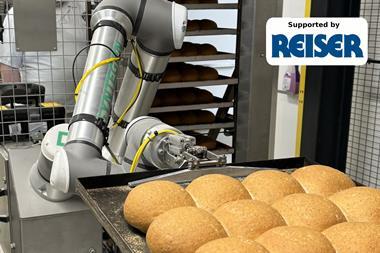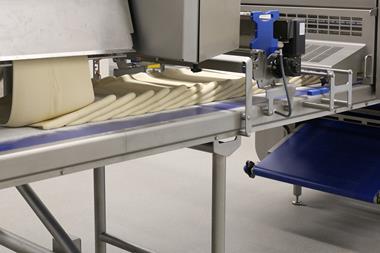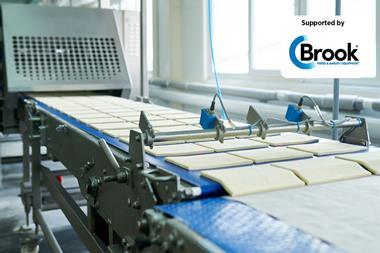The benefits that retarder provers bring to a bakery cannot be underestimated – and could even play a role in encouraging youngsters into the trade
Time-saving is often cited as the key reason for using a retarder prover – but the benefits go beyond enabling a baker to catch up on sleep.
That’s not to downplay the value of a retarder prover in terms of time efficiency. It can be set to come on and prove dough so it is ready for the first bake when the baker arrives in the morning.
This negates the need to get up at 4am and allows the bakery to have the first bread ready sooner than if starting with a fresh mix. As well as potentially saving a few marriages, this can help with staffing.
“Recruiting and retaining bakers remains a major issue for many bakery businesses, so anything that helps alleviate the problem of getting staff in so early in the morning has to be of help,” says EPP managing director Steve Merritt, who recently led a management buyout at the business.
Retarder provers also help bakers plan production, prevent supply shortfalls and ensure ovens are used to their full potential and capacity. For example, a retarder prover can provide spare capacity for products that can be baked off at intervals throughout the day. This is helpful for supermarkets that require small batches of freshly baked products on the shelf.
And their use is growing, according to Norbake, which supplies Lillnord equipment and has seen demand for retarder provers rise 70% in 12 years.
Rademaker, meanwhile, says it has adapted its systems in the past few years to meet the demands of larger-capacity production lines and customers who want to run a range of goods on the same system.
“Operation-friendliness, the ease of controlling a proofing system and the reduction in errors are becoming more and more important,” it states. We have translated this to being capable of running production with a flexible proofing time, independent from the capacity and in our control system. For example, our lot tracking system is a result of this.”
EPP works with German equipment manufacturer MIWE, which says it can cope with production requirements of a few trays up to more than 200 racks. “The largest MIWE prover EPP has installed in the UK and Ireland – with a capacity of 230 racks – is at a leading independently-owned Scottish bakery,” adds Merritt.
While proofing is not complicated, it is fundamental to the quality of a baked product: not enough humidity and it will not rise properly, too much and excess moisture condensing on the dough could result in a tough crust and surface blisters.
“A retarder prover can slow down fermentation, giving the user control over how fast this takes place,” explains Campden BRI senior bakery technologist Nathan Giles. “Low-temperature proving affects the performance of emulsifiers and enzymes, so can be used to create different crumb structures,” he says, adding optimal use of a retarder prover can improve the quality of a product.
Sourdough and products with high levels of butter such as a brioche dough are best retarded at low temperature. “These products need longer fermentation to allow the bacteria (in the sourdough) and natural yeast to function, and to provide stability of the dough,” says Giles. He adds that lower temperatures for proving are good for products containing a high proportion of hard fat, such as laminated products, including croissants and Danish.
To make the most of a retarder prover, a baker should ensure the recipe balance is optimised, explains Giles. “For example, too much yeast and the dough will be over-proved before it is ready for baking, too little yeast and the dough will not prove within the time required.”
’Expensive but worth it’
Craft bakers use retarder provers for a range of functions, including improving space efficiency and product quality.
Chris Bachmann, MD of Bachmanns Patisserie (pictured right), explains he employs a retarder prover in a variety of ways. He describes them as “an expensive outlay, but worth it”, adding that they improve product consistency.
“There are no variable temperature fluctuations moving the product from freezer to fridge to thaw and then from the fridge to the prover, as the goods are contained within one unit,” explains Bachmann. “The unit can be precisely programmed to thaw gently, and then prove at the correct rate and for the required time, giving the best results.”
His business loads the prover with croissants and Danish the night before baking, so they are proved and ready to bake when staff get in, which saves on staff costs. Bachmann adds this is particularly helpful as staff do not work on Sunday and Monday, and that Tuesday’s goods can be loaded on Saturday.
“We have to manage our fridge and freezer space very carefully, especially at peak times,” explains Bachmann. “Because the retarder prover is so versatile, it can be used as a spare freezer to chill down or hold products, as an extra fridge or as a warming cupboard during the day once the morning bake-off cycle is finished.”
The business has also used the retarder prover to set mousses, freeze cheesecake, accelerate fermentation of Christmas fruits, warm fondant glazes, melt ganaches and temper chocolate.
Derbyshire business Stacey’s Bakery, which has two retarder provers, appreciates the efficient use of space. They are used to store sausage rolls and pies produced in the afternoon and baked the following morning, while in the morning the space is used as a prover. “We have less and less space in the bakery and retarding proving really helps with this,” adds owner David Stacey.
He also advises that a baker looking to make best use of a retarder prover should research if the items intended to be retarded and then proved will be of the same quality as if they had been just proved and baked.
“We have found it’s harder to maintain quality doing this,” he explains. “We only have one line we do this for (tea cakes), because we can’t get these out of the oven early enough for our first delivery run. The additional time these take to prove when compared with non-retarded tea cakes (around one and half hours) highlights the additional energy costs of retarding and proving.”


























No comments yet